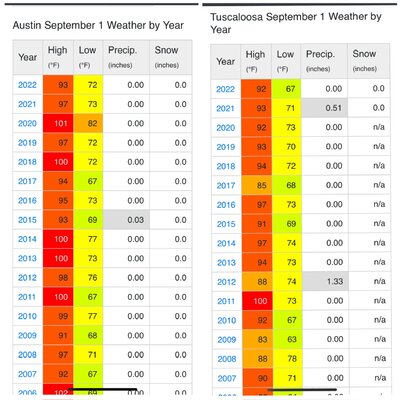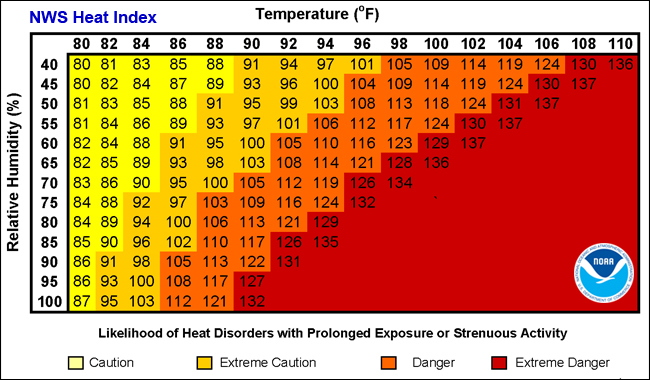LOL
What about it? Here's an official chart for you regarding Heat Index and an explanation of why Humidity plays a major role in it.
View attachment 103282
| "It's not the heat, it's the humidity". That's a partly valid phrase you may have heard in the summer, but it's actually both. The heat index, also known as the apparent temperature, is what the temperature feels like to the human body when relative humidity is combined with the air temperature. This has important considerations for the human body's comfort. When the body gets too hot, it begins to perspire or sweat to cool itself off. If the perspiration is not able to evaporate, the body cannot regulate its temperature. Evaporation is a cooling process. When perspiration is evaporated off the body, it effectively reduces the body's temperature. When the atmospheric moisture content (i.e. relative humidity) is high, the rate of evaporation from the body decreases. In other words, the human body feels warmer in humid conditions. |
In my example I referred to "August fall camp". i.e. What they'll be practicing in. What temperatures they'll be conditioning for once the season opens September 1st.
Tuscaloosa average August humidity = 73%
Austin average August humidity = 59%
In your example you used September 1st high temperatures. OK
In 2022
Austin = 93°
Tuscaloosa = 92°
Using the Weather.gov provided Heat Index (feels like) chart...
That 93° in Austin felt like appx 107°
That 92° in Tuscaloosa felt like appx 114°
As I stated Alabama players (and the rest of the deep south players) will be just as (if not more than) acclimated to Austin heat as tejas players come September.







